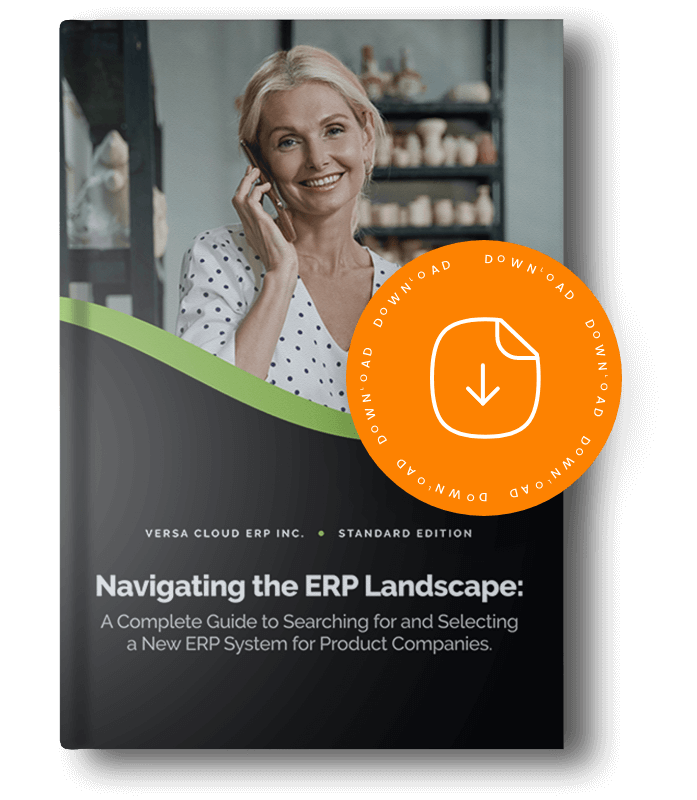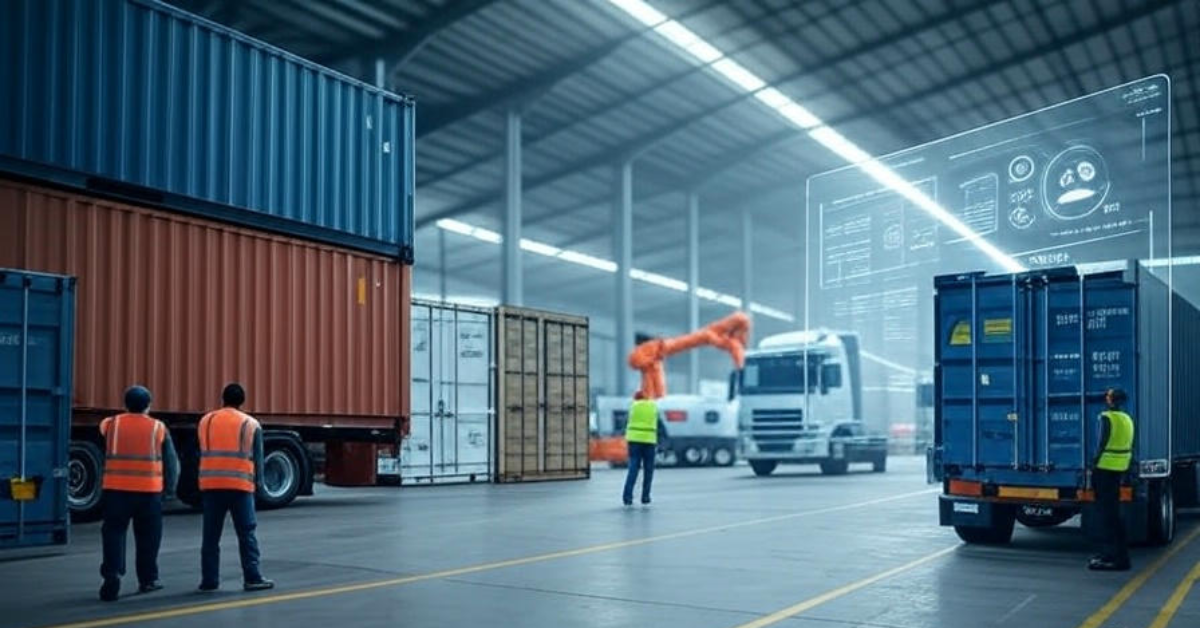Introduction: Why Speed, Agility & Insight Matter More Than Ever for SMBs
In the current economy, small- and medium-sized businesses (SMBs) are leading the pack and going beyond being followers of larger competitors. Whether rolling out dozens of products quickly, growing fulfillment capacity, or managing intricate supply chains, agility matters. Unfortunately, traditional ERP systems often lag behind. When every decisions needs to be taken quickly and then executed even quicker, latency can be a killer.
That’s where edge computing comes into play. Edge computing is more than just a buzzword; it is changing the way ERP systems are able to process information. It allows SMBs to respond to what’s happening right now—not after minutes or hours. This blog post will take an in-depth look at what edge computing is, how it interacts with ERP System, and why it is important now more than ever.
What Is Edge Computing? (Explained Simply for Non-Tech SMBs)
Edge computing is the practice of analyzing data near its source rather than sending it to a distant data center or cloud for analysis. Instead of waiting for information to be returned by centralized systems, edge computing allows devices (such as routers, sensors, or gateways) to perform computing tasks locally.
Imagine your ERP system as your brain. Traditional ERP systems depend on a central cloud server to process every single action—like muscle movement needing to be approved by your brain in another room. Edge computing puts the decision-making center closer to where the action happens.
For SMBs, this means:
- Machines can monitor their own health and raise alerts instantly.
- Retail systems can track purchases and stock levels in real time.
- Warehouses can optimize picking and packing without delays.
How Traditional ERP Creates Bottlenecks for SMBs
Conventional ERP systems are usually cloud-based or hosted at a central site. This model is suitable for reporting and a long-term view of analytics, but introduces delays in situations where action is needed in real-time.
Common bottlenecks include:
- Latency in Decision-Making: By the time data is sent to the cloud, processed, and sent back, the opportunity to act on it may have passed.
- Bandwidth Limitations: Continuously sending vast amounts of data to the cloud can cause congestion and slow down processes.
- Single Point of Failure: If the cloud server goes down or loses connectivity, operations may halt.
- Lack of Autonomy at Remote Locations: Field operations or branch stores may become dependent on the central system, limiting their ability to operate independently.
For SMBs with leaner teams and resources, these challenges translate into lost time, inefficiencies, and missed business opportunities.
The Edge ERP Advantage: Key Benefits for SMBs
Real-Time Decision-Making: Edge computing allows ERP systems to collect, analyze, and act on data the moment it’s generated. For example:
- A sensor detects overheating in a piece of machinery and triggers a preventive maintenance order in the ERP system.
- A customer purchases the last unit of a product, and the system instantly updates stock levels and notifies purchasing.
This level of responsiveness gives SMBs a competitive edge—no more waiting for backend updates.
Operational Resilience: When critical systems are hosted in the cloud, internet disruptions can bring operations to a halt. With edge computing:
- Local systems can function independently, ensuring business continuity.
- Remote locations—like warehouses or satellite offices—can keep running without being tethered to a central server.
Lower Bandwidth, Lower Costs: Constantly sending raw data to the cloud is expensive and inefficient. Edge computing reduces this burden by:
- Processing data locally and only pushing important or aggregated data to the cloud.
- Minimizing cloud storage and data transfer fees.
Improved Compliance and Data Privacy: Many industries are governed by strict data regulations. Edge computing enables:
- Localized data storage that can adhere to region-specific laws like GDPR.
- Greater control over who accesses what data and where.
Enhanced IoT Integration and Smart Automation: Edge computing is the ideal partner for IoT devices. Use cases include:
- Smart shelves in retail updating stock levels instantly.
- RFID sensors on delivery vehicles syncing with ERP to monitor route efficiency.
- Motion sensors on production lines feeding real-time updates to logistics teams.
Real-World Examples: How Edge ERP Is Already Working for SMBs
Retail Chains: POS systems equipped with edge capabilities update sales and inventory across all locations immediately. This reduces errors in reordering and provides accurate stock visibility, even during high-traffic periods.
Manufacturing Plants: Edge-enabled ERP systems collect machine performance data directly from equipment sensors. If anomalies are detected, alerts and maintenance orders are generated before breakdowns occur.
Warehousing & Logistics: Warehouse management systems running on edge platforms allow handheld scanners and smart shelves to communicate instantly with ERP. This minimizes picking errors, shortens fulfillment cycles, and reduces stockouts.
Healthcare Clinics: Patient scheduling systems can remain operational even if connectivity to the central database is lost. Medical inventory levels are updated locally, ensuring that supplies are reordered at the right time.
Technologies That Enable Edge ERP
To implement edge ERP, a combination of technologies is required:
- IoT Devices: Sensors and smart devices that generate real-time data.
- Edge Gateways: Devices that collect and process data before it’s sent to the cloud.
- Micro Data Centers: Compact computing infrastructure deployed on-site.
- Hybrid ERP Systems: ERP platforms that support both centralized and decentralized data processing.
- Artificial Intelligence (AI) & Machine Learning (ML): Algorithms that can operate at the edge for local decision-making.
- 5G Networks: Fast, low-latency connectivity that supports high-speed edge communications.
How SMBs Can Prepare for an Edge-ERP Strategy
1. Evaluate Current ERP Infrastructure
Take a step back and review your current system’s architecture. Is it flexible enough to support distributed computing? If you’re using legacy software or rigid modules, you may need to invest in cloud-native ERP systems that offer edge functionality.
2. Define High-Impact Use Cases
Focus on areas where latency or centralization is limiting performance. This could be:
- Branch locations relying on unreliable internet
- High-speed manufacturing requiring sub-second reaction time
- Service operations that need mobile-first support
Map out what data is needed locally and what can stay in the cloud.
3. Plan for Infrastructure and Hardware
Implementing edge means having the right equipment in place:
- Sensors and edge processors on-site
- Localized servers or micro-data centers
- Network upgrades to handle local routing
Work with a technology partner to assess the total cost of ownership and plan staged rollouts.
4. Strengthen Cybersecurity Measures
Each edge device becomes a new access point. SMBs must bolster endpoint security with:
- Network segmentation
- Local firewalls and antivirus
- Regular device patching and firmware updates
A strong edge ERP strategy starts with secure infrastructure.
5. Educate Teams and Foster Collaboration
Your operations, IT, and data teams must collaborate. Make sure everyone understands:
- How decisions will shift from central to local
- What data is mission-critical
- Who will manage and maintain edge environments
Change management and training are crucial for adoption.
Challenges to Watch Out For
While the benefits are compelling, edge ERP does bring new hurdles:
- Initial Investment: From edge devices to IT upgrades, the upfront costs may strain SMB budgets.
- Data Fragmentation: With data processed across various locations, ensuring consistency becomes more complex.
- Vendor Lock-In: Some edge solutions are proprietary, creating long-term dependency risks.
- Skill Gaps: Internal teams may lack experience managing decentralized systems or hardware troubleshooting.
- Compliance Complexity: Ensuring all regional and industry-specific regulations are enforced at the edge requires more governance layers.
Being realistic about these challenges—and addressing them early—will ensure your edge ERP rollout delivers lasting results.
The Future of Edge Computing in ERP
ERP is becoming more modular, flexible, and location-aware. Over the next few years, we’ll see:
- Mainstream Adoption of Edge-Native ERP: Vendors will build native edge capabilities directly into ERP software.
- AI at the Edge: Not just capturing data but making decisions where the data originates—such as triggering workflows or autonomously rerouting logistics.
- Self-Healing Systems: Predictive maintenance and AI-driven diagnostics at the edge will reduce unplanned downtime.
- Standardized Architecture: Greater compatibility across devices, ERP platforms, and cloud providers will simplify implementation.
SMBs that move early will gain the agility and insight to outpace their competitors—and make smarter decisions at every level of operation.
Conclusion: Edge ERP Is the Next Logical Step for Growth-Focused SMBs
Edge computing isn’t about replacing the cloud. It’s about making ERP smarter, faster, and closer to where your business happens. For SMBs, it levels the playing field—offering the kind of real-time control and local autonomy that was once only accessible to enterprise giants.
If you’re serious about streamlining operations, improving uptime, and making faster, data-driven decisions, now is the time to explore how edge-enabled ERP can transform your business.
Want to See If Your ERP Is Edge-Ready?
See how an edge-powered ERP can work for your organization. Whether you’re starting with one location or deploying it across the enterprise, the edge will provide clarity and speed to your operations to help you scale smarter.
Take the First Step Towards Transformation
Effectively manage your financials, multiple channel inventory, and production workflows with our award-winning ERP.
Let Versa Cloud ERP do the heavy lifting for you.
Do Business on the Move!
Make your businesses hassle-free and cut the heavyweights sign up for the Versa Cloud ERP today!!
Join our Versa Community and be Future-ready with us.









